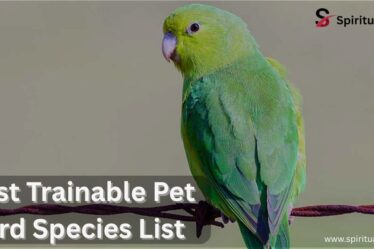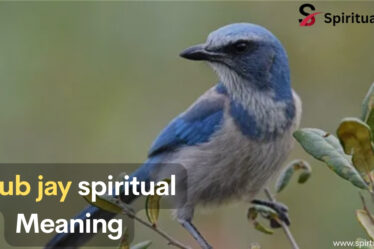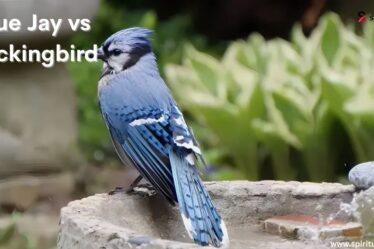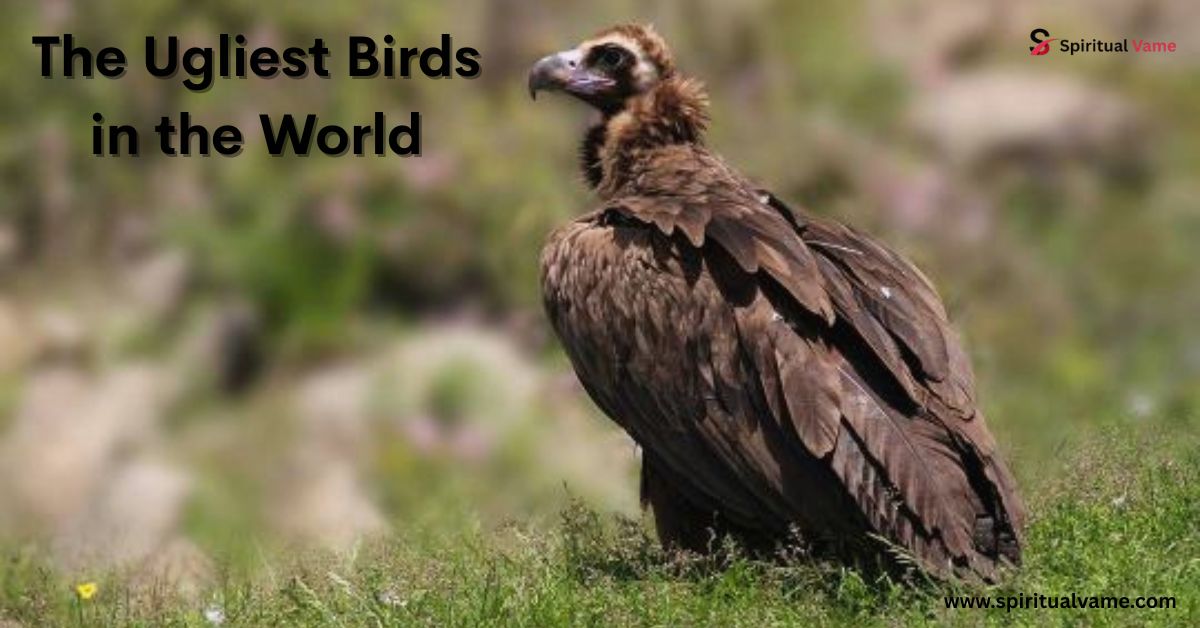
Birds are often known for their bright feathers and pretty songs. But not all birds fit that picture. Some look very strange and even a little scary. In this article, we will look at the ugliest birds in the world and what makes them so different.
The ugliest birds in the world may have bald heads, big beaks, or messy feathers. These birds may not win beauty contests, but they are still important in nature. Each one has special features that help it survive. From vultures to shoebills, the ugliest birds in the world show us that beauty isn’t everything. Let’s learn more about these odd but amazing birds.
22 Of The World’s Ugliest Birds
When it comes to strange birds, this list is hard to beat. These birds have awkward features, such as huge eyes, bald heads, drooping necks, and oversized bills. From Africa to the Americas, each bird looks the way it does for a reason—whether it’s for attracting mates, scaring predators, or making scavenging easier.
Some birds, like the shoebill and the marabou stork, have such unique and prehistoric features that they resemble ancient creatures. Others, like the vulture or Muscovy duck, might look disproportioned or grotesque, but are actually quite impressive when it comes to survival. These birds are not just the ugliest birds in the world, they’re among the most interesting.
Cinereous vulture (Aegypius monachus)
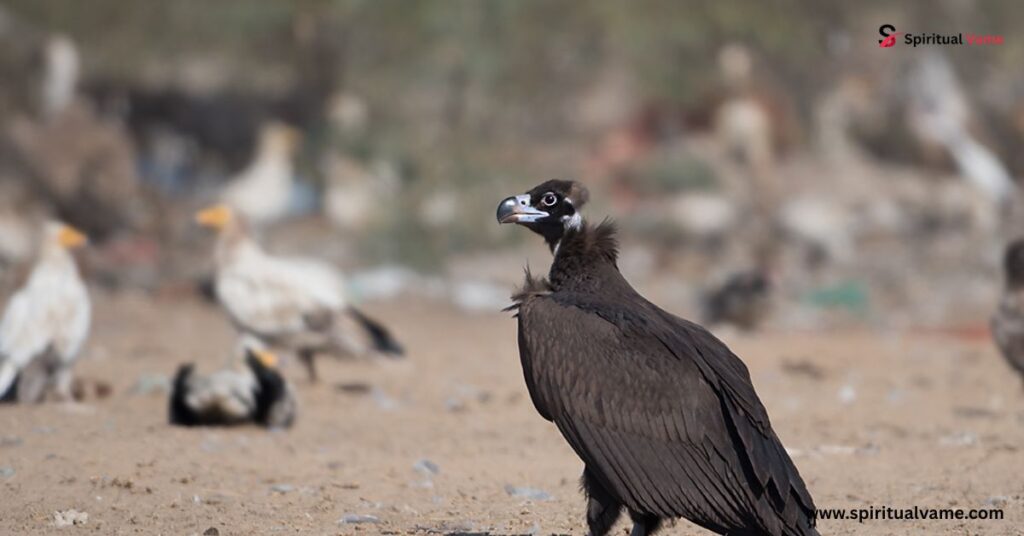
The cinereous vulture is one of the largest and heaviest flying birds in the world. Its black feathers, bald head, and menacing beak make it look intimidating and unattractive. This scavenger feeds on dead animals and is built for the job. Its featherless head prevents infection while eating rotting meat, and its massive wingspan—up to 10 feet—helps it soar for miles in search of food.
Though its look is far from pretty, this bird plays an essential role in its ecosystem. It’s a cleaner of the wild, preventing disease by consuming decaying matter. That’s one job that needs doing, even if it’s not glamorous.
Eastern wild turkey (Meleagris gallopavo silvestris)
The eastern wild turkey, found across the United States, is instantly recognizable. It’s not just the bird you eat on Thanksgiving—it’s also one of the ugliest birds walking American forests. With its featherless red head, droopy wattle, and wrinkled skin, it looks more like a dinosaur than a modern bird.
But that awkward look has a purpose. The bright, grotesque skin changes color based on the turkey’s emotions, especially during mating season. What may seem scary or odd to humans is quite attractive to female turkeys. Love truly is blind.
Andean condor (Vultur gryphus)
The Andean condor is a powerful bird with a not-so-lovely face. Native to South America, this scavenger has a bald, wrinkled head and a hooked beak made for tearing flesh. Its wingspan can reach over 10 feet, making it one of the largest flying birds on Earth.
Its strange look helps it stay clean while feeding. Without feathers on its head, the condor avoids getting food stuck while eating carrion. It may look prehistoric and frightening, but it’s well designed for its harsh mountain habitat.
Muscovy duck (Cairina moschata| The Ugliest Birds in the World)
The Muscovy duck stands out with its bright red, bumpy face that looks more like a disease than a feature. Native to Central and South America, this bird has a striking, odd, and almost comical appearance. It’s also known for being silent—unlike most ducks, it doesn’t quack much.
Despite its looks, the Muscovy duck is quite popular on farms for its meat and eggs. Its awkward facial-plumes are a result of selective breeding. So while its appearance is bizarre, its usefulness earns it a spot in many backyards.
Marabou stork (Leptoptilos crumenifer)
If there were a king of ugly birds, the marabou stork would likely take the crown. This massive African bird has long skinny legs, a featherless head, and a huge pouch-like sac hanging from its neck. Standing up to 5 feet tall, it looks more like a creepy old man than a bird.
Its grotesque features serve a function. Like other scavengers, its bald head helps keep it clean while eating. The gular sac helps it cool down in the hot African sun. Though ugly, the marabou is essential to its ecosystem, eating garbage, dead animals, and anything else it can find.
Sri Lanka frogmouth (Batrachostomus moniliger)
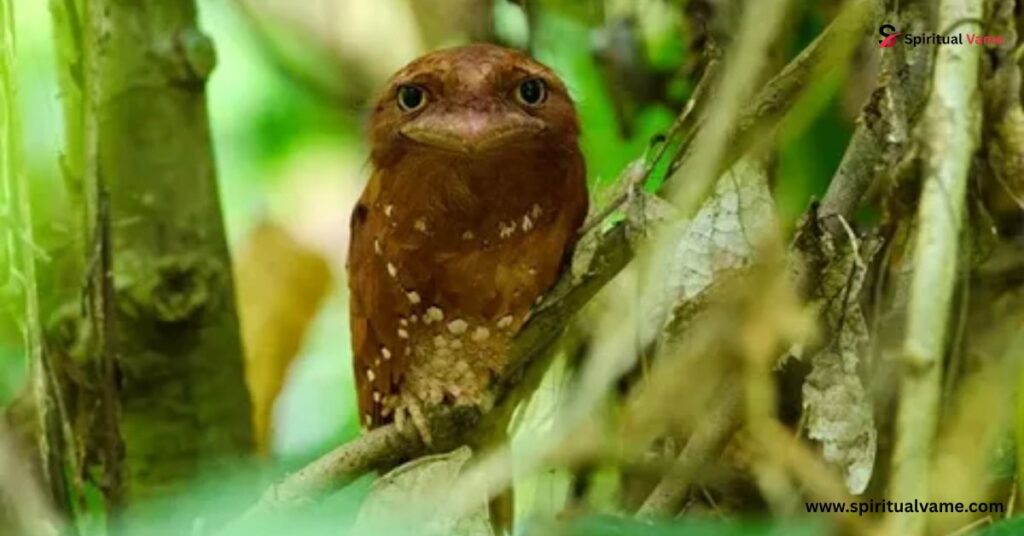
This bird looks more like a puppet than a living creature. With a wide, flat beak, sleepy eyes, and mottled brown feathers, the Sri Lanka frogmouth blends in perfectly with the forest floor. Its look is comical, strange, and a bit awkward.
Though it may appear useless, its strange shape helps it avoid predators. The frogmouth’s feathers make it almost invisible in low light, allowing it to sit still and stay hidden. Evolution gave it this ugly appearance as a survival tool.
Vulturine guineafowl (Acryllium vulturinum)
The vulturine guineafowl is both bizarre and beautiful in its own way. It has a bald head like a vulture but a shiny, spotted blue and black body. Its contrasting features make it look disproportioned and awkward.
It roams African grasslands in groups, and despite its strange appearance, it’s quite social and intelligent. The lack of feathers on its head helps it stay clean while pecking around, and the bright body feathers are used during social displays.
Greater adjutant (Leptoptilos dubius)
A close cousin to the marabou stork, the greater adjutant is equally strange-looking. With its bald head, long dangling neck sac, and hunched posture, it looks like something out of a horror movie. Standing over 5 feet tall, this awkward bird feeds mostly on dead animals and waste.
Sadly, this bird is also one of the most endangered in the world. It may not win a beauty contest, but it’s a vital cleaner of its habitat, playing a crucial role in waste disposal in regions like India and Southeast Asia.
Turkey vulture (Cathartes aura)
The turkey vulture, common across North and South America, has a look that might scare you off a hiking trail. With its featherless red head, large black wings, and hunched shoulders, this bird looks both ancient and creepy.
But there’s beauty in its purpose. As a scavenger, it uses its powerful sense of smell to find dead animals. Its bald head keeps it clean while feeding, and its wide wings help it soar without flapping, saving energy as it scans the ground below.
Saddle-billed stork (Ephippiorhynchus senegalensis)
With its long legs, colorful face, and huge bill, the saddle-billed stork is a walking contradiction. It’s striking but also slightly awkward, especially when seen walking through wetlands in Africa.
Its large, red and black bill is shaped for catching fish and frogs. The bright yellow saddle near its beak gives it its name. Though it looks out of place in modern nature, it’s perfectly adapted to its swampy home.
Southern ground hornbill (Bucorvus leadbeateri)
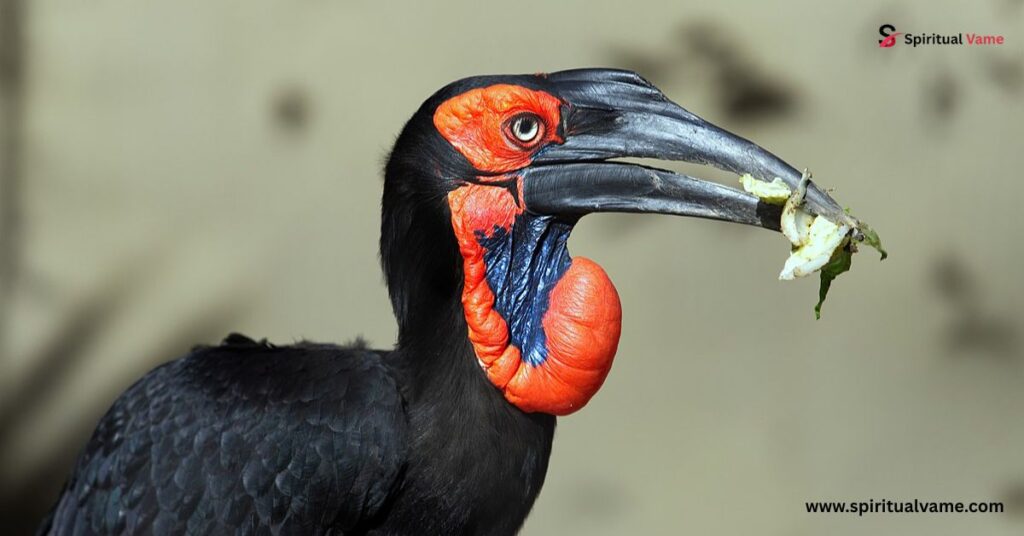
This hornbill species is big, black, and bald in all the wrong places. Its face is marked with wrinkled red skin, and its facial features make it look like it’s constantly angry or sick. Found in sub-Saharan Africa, this bird walks the ground rather than flying much.
It uses deep booming calls to communicate over long distances, especially during the mating season. Though its face is hideous, the southern ground hornbill is actually endangered due to habitat loss.
Wood stork (Mycteria americana)
Native to the southeastern United States, the wood stork has a body of fluffy white feathers but a head that looks like it belongs to a reptile. Its bald, scaly head and long awkward beak give it a prehistoric appearance.
It wades in wetlands looking for fish, snapping them up with lightning speed. Despite its appearance, it’s a skilled hunter and an important wetland resident.
Jabiru (Jabiru mycteria)
This stork, found in the Americas, has a powerful, tall build and a thick black neck topped by a wrinkled head. Its size—up to 5 feet tall—makes it stand out, and its ugly features only add to its dramatic presence.
It plays a key role in wetland health, using its strong bill to catch fish and amphibians. While it may look strange, it’s a silent guardian of riverbanks and marshes.
King vulture (Sarcoramphus papa)
The king vulture is one of the most visually confusing birds in the world. Its body is mostly white with black wingtips, but its head is a swirl of bright orange, yellow, and purple. While those colors might sound beautiful, the actual result is often described as grotesque or even scary. It has a wrinkled neck, bulging eyes, and a wattle that looks like melted wax.
Living in Central and South American rainforests, the king vulture is a scavenger that often waits for larger vultures to tear open carcasses before it steps in to eat. Its strong beak allows it to finish off what others leave behind. Though its appearance is awkward and striking, it’s actually a sign of its efficiency and role in maintaining a clean environment.
Shoebill (Balaeniceps rex)
The shoebill might be the most prehistoric-looking bird alive today. Native to the swamps of central Africa, this large, gray bird gets its name from its enormous beak, which looks like a wooden clog. That oversized bill gives it a very awkward and almost robotic appearance. Standing up to 5 feet tall, it can be quite intimidating to see.
Despite its weird looks, the shoebill is a skilled predator. It feeds mainly on fish, snakes, and even baby crocodiles. Its large bill helps it scoop and crush prey with ease. The shoebill’s slow movements, bizarre facial features, and eerie silence make it one of the world’s most awkward-looking and fascinating birds.
Greater sage-grouse (Centrocercus urophasianus)
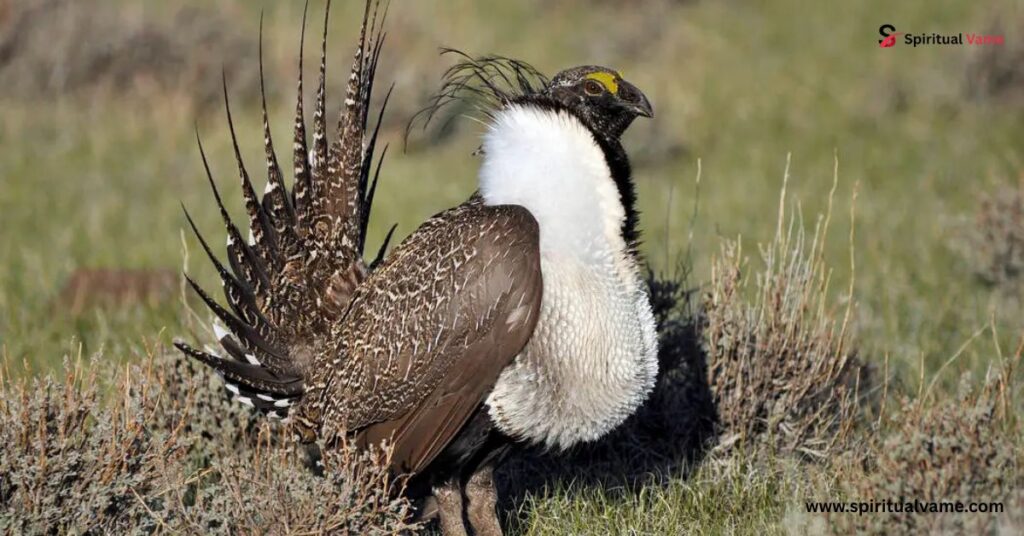
The greater sage-grouse is not so much ugly as it is strange. During mating season, the male performs one of the most bizarre displays in the bird world. It puffs up two large yellow air sacs on its chest and makes strange popping sounds while fluffing its feathers. The result is both awkward and comical, with its chest puffed out like a cartoon character.
These birds live in the open sagebrush of North America. While the males are only temporarily awkward-looking, the effort they put into their appearance is all about attracting a mate. What looks funny or grotesque to us is deeply impressive to the female sage-grouse.
California condor (Gymnogyps californianus)
The California condor is one of the rarest birds in the world, and also one of the most hideous in appearance. With a bald head, loose skin, and a long neck, it looks almost like a prehistoric vulture. But don’t let its appearance fool you—it is a majestic flyer with a wingspan of nearly 10 feet.
This bird is a scavenger, using its sharp beak to clean up carcasses in the wild. Its featherless head, like other vultures, is a health feature that helps keep it free of bacteria. The condor may not be easy on the eyes, but its role in nature is vital. Conservation efforts have helped bring this strange giant back from the edge of extinction.
Horned screamer (Anhima cornuta)
The horned screamer is one of the strangest birds of South America. It has a long horn-like feather sticking out of its head that looks more like a unicorn than a bird. This odd feature is what gives the bird its name. Combined with its heavy body and thick feet, the horned screamer is one of the most peculiar-looking birds on Earth.
Its loud voice can be heard from far away—hence the name “screamer.” Despite its awkward build and strange facial feature, it spends most of its time peacefully feeding on water plants. This bird proves that being loud and awkward can still help you survive just fine in the wetlands.
Wattled jacana (Jacana jacana)
The wattled jacana is a small bird with long legs and toes that allow it to walk on floating plants. Its most awkward feature is the pair of red wattles hanging from its face, which look completely out of place on such a small body. These fleshy growths give it a slightly unattractive and comical appearance.
Found in Central and South America, the jacana’s strange look helps it blend in with water lilies while searching for insects. Its toes are specially adapted to spread its weight so it can walk on water plants without sinking. Despite its bizarre appearance, this little bird is perfectly built for its floating lifestyle.
Hornbill (Bucerotidae)
The hornbill is a large bird with an even larger personality. Its giant, curved bill is topped with a casque, a horn-like structure that makes it look top-heavy and awkward. Some hornbills have bright colors or strange facial structures that add to their grotesque charm.
Hornbills are found in Africa and Asia, where they live in tropical forests. Their bills are used to dig, break food, and even make calls that echo through the jungle. While some people find their look comical or bizarre, hornbills are symbols of strength and love in many cultures.
Kakapo (Strigops habroptilus)
The kakapo is a flightless, nocturnal parrot from New Zealand. It has a chunky body, green mottled feathers, and a strange facial structure that resembles an owl. It walks with a waddle and has a scent that can be detected by predators, making it one of the most awkward and endangered birds alive today.
Despite its flaws, the kakapo is incredibly unique. It lives on the forest floor, feeding on plants and hiding during the day. Males boom loudly during mating season, creating a deep sound that travels far. Conservationists are working hard to protect this ugly but charming bird.
Conclusion
So, what makes a bird ugly? It could be a bald head, an oversized beak, wrinkled skin, or simply a strange behavior that makes them stand out. The truth is, nature doesn’t care about looks. These birds may not be pretty, but each one is perfectly adapted to its environment.
From scavengers like the vulture and marabou stork, to awkward-looking birds like the shoebill and kakapo, every bird on this list is a survivor. Their comical, grotesque, and bizarre features are not flaws—they’re the result of millions of years of evolution, shaped by the demands of survival, mating, and environmental challenges.
In the end, what we see as ugly is often just a different kind of beauty—a reminder that diversity in nature comes in all shapes and sizes. So the next time you see one of the world’s ugliest birds, look a little closer. You might just find them more fascinating than you thought.

